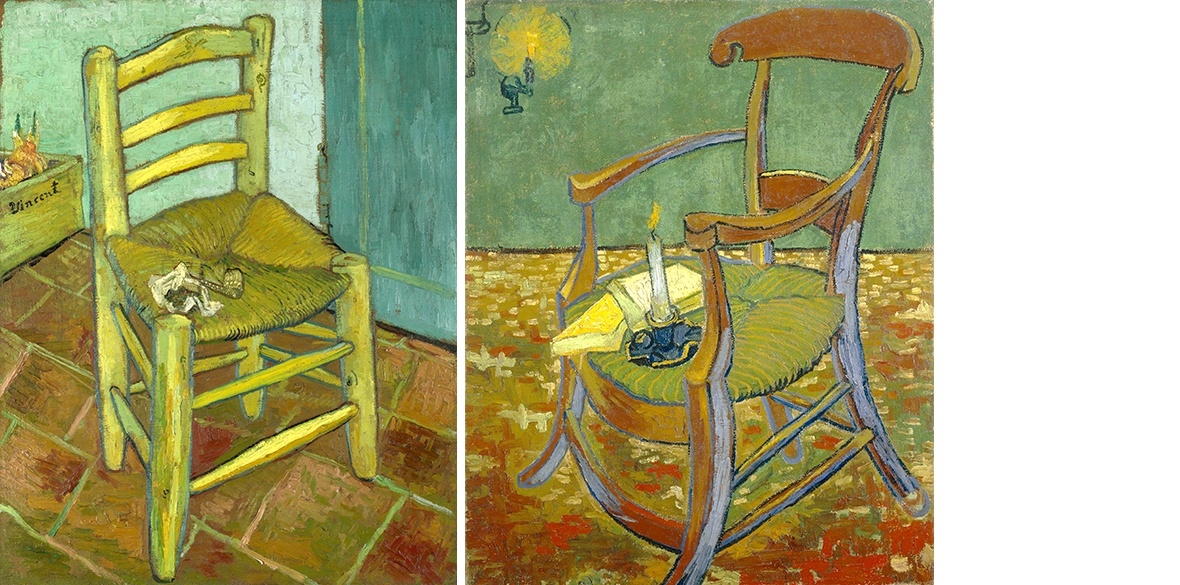This is the last article you can read this month
You can read more article this month
You can read more articles this month
Sorry your limit is up for this month
Reset on:
Please help support the Morning Star by subscribing here
AFTER looking at paintings for more decades than I care to admit, it is impossible to definitely choose a single one as my favourite painting.
Thousands of paintings, many seen in the original and many more in reproductions, swirled around my head. But Vincent van Gogh’s The Chair of 1888 kept returning.
Made of unvarnished, roughly hewn wood with a woven straw seat it was the very antithesis of the dominant late 19th-century bourgeois taste which favoured ornate carvings, precious woods and refined craftsmanship.
Only peasants and poor artisans would have owned such a chair, although the bourgeoisie may well have placed these in their servants’ quarters.
To take one these humble objects as the sole subject of his painting was a radical act and an affirmation of van Gogh’s lifelong affinity with and respect for the peasantry and of his distrust of bourgeois hypocrisy and posturing.
Van Gogh was one of the most perceptive observers of contemporary society and of his own inner states of mind.
He wrote to his brother Theo that he’d painted two chairs as symbolic portraits of himself and of Paul Gauguin with whom he was then living in Arles. His “portrait” painting of Gauguin’s chair also has a straw seat but it is a more comfortable armchair with arm rests and a deep brown varnished walnut frame.
In contrast van Gogh’s upright chair is austere. On its seat lie a simple clay pipe and an opened tobacco wrap. One chair to rest or lounge in, the other to sit up straight at a table from which to read or to eat.
Painted in 1888 and reworked in 1889 Van Gogh’s painting forms part of his passionate critique of contemporary Salon painting whose dominant aesthetic vied with photography to create finicky, detailed and idealised works.
The term “primitive” was understood as an important positive characteristic by the late 19th-century avant-garde. They discovered and admired the non-European art and artefacts of ancient Egyptian, Javanese, Peruvian, Japanese and Celtic societies which they considered to be “closer to nature” than those of industrialised, urban societies.
Van Gogh emphasised The Chair’s simplicity by outlining its form with dark lines, and by using visible, and occasionally impasto brushstrokes which echo that of the carpenter’s chisel. Its frame is a vivid yellow with touches of orange which appear to come straight from the tube.
In contrast to Salon painting’s insistence on Renaissance perspective, Van Gogh combined several viewpoints, so that the we look down on the chair’s seat, but over at the wall and the door behind, while the red tiled floor appears to be tipped up as we look down at the tiles in the foreground but over at those at the back. And the composition relies on the dominant primary colours of yellow, red and blue as bold as in a children’s colouring book.
The marvel of this painting is that its seemingly simple, mundane subject has been transformed to provoke a myriad of ideas, feelings and associations, so that it still looks modern despite having been painted well over a century ago.
In the 1970s there was revival of this “rustic” aesthetic and furniture partly inspired by Van Gogh’s chair became fashionable. Over 30 years after van Gogh’s untimely death in 1890 aged 37, The Chair was bought by London’s National Gallery where it can be enjoyed for free in room 43.









